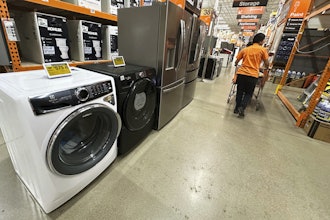 Your supply chain is the biggest source of risk in your entire operation. Unfortunately, there are many day-to-day aspects that you’ll never be able to completely control or manage. Sometimes, you’ll need to rely on the strength and diligence of your partners to make sure your operations are safe.
Your supply chain is the biggest source of risk in your entire operation. Unfortunately, there are many day-to-day aspects that you’ll never be able to completely control or manage. Sometimes, you’ll need to rely on the strength and diligence of your partners to make sure your operations are safe.
To help you create a safer supply chain, we’ve put together seven pillars of security.
1. Set Mutual Goals: Aligning your goals and the payment structure of your supply chain can strengthen the deals that you’ve already made because it reduces the benefit that a supplier would see through not living up to your contract or taking an unwarranted risk. This work also establishes an understanding between you and your suppliers, that way they have a solid understanding of your business needs and how they fit into your overall supply chain structure.
This type of arrangement can also help you and your suppliers to work out contractual benefits. If your financial planner or partner says that extended payment terms may help you at the end of the year, but notes that you have a mid-year surplus, mutual goals may help you marry both into a stronger supply chain partnership.
2. Reward Good Suppliers: Beyond tying success metrics to the contract rates and payments, you can also use incentives to reward your suppliers for the efforts they take in mitigating risk in your supply chain. Rewards can be tied to a lot of different practices, such as providing you with a copy of their sourcing strategy in the event that their main raw material (or other) provider is unable to fill an order. Letting your partners know about rewards, whether they be increases to overall rates or bonuses, can help them become proactive to avoid or mitigate risk in your supply chain.
3. Limit Access: Most supply chains have some items that travel the entire length, sometimes with little change or adjustment. These items are touched at many different points, even if it is simply loading or repackaging. Is there a way for you to remove the touch points of these items? For mission-critical parts or pieces, is there a way to adjust their delivery and actually remove the steps they take through your supply chain? By changing delivery and warehousing practices so that your employees have more control and touch, you can reduce outside influence on your supply chain. Limiting access to what travels through your cycle means less chance for a bad actor to cause a disruption for your business.
4. Visit Your Sites: This one should already be on your list, but it may not, especially for parts of your supply chain outside of your home country. Visit as many sites as you possibly can – whether it’s you or a representative – so you can have an idea of how your supply chain looks in areas outside of your control. Not only can you potentially see red flags for practices or structures, but you can also find out what suppliers are nervous or unwilling to let you visit the operation. Disallowing visits can cause worries, especially over quality and worker safety, both of which will impact your supply chain and your corporate image.
5. Learn Everyone’s Value: You likely have suppliers that take very different approaches to your business and its risk. Take time to discuss your supply chain, risks, operational assessments and even public relationships or perceptions. A conversation can provide you with a good snapshot of your supplier and help you understand what industry knowledge they have that you may not be using to your advantage.
Some of your suppliers likely work in areas that have experienced turmoil in recent months. Global and regional conflicts have interrupted many new supply chains. If you have a partner with this security related knowledge, they may be able to provide you with real-world solutions or preventions to new risks arriving for many manufacturers and supply chains.
6. Compare Your Future with Your Past: How are your quarterly financials looking? You likely look at these once in a while and try to determine yearly and quarterly goals based on what you think the market is doing. However, you may be missing something that’s happening at the beginning or end of a cycle that gets swept up in quarterly generalizations. One way to improve the usefulness of your reporting is to compare yourself against industry benchmarks as well as 30-day marks for your suppliers. This type of analysis can help you sniff out if you’ve got someone who runs late in a consistent pattern. Those delays or close-calls can be a big point of risk, especially if this supplier is working in a niche where there are few replacements or one that involves areas of conflict.
7. Train, train, train: You know what supply chain risk looks like, but what about your employees? Are the people closest to risk events aware of everything they can do to prevent problems from loading and unloading to transport or theft? Everyone who can help to mitigate risk through their daily operations should be trained on what to look for in their work.
Beyond individuals learning what to do today, you’ll want a department that’s looking at how to protect your supply chain tomorrow. You may be familiar with some of the hands-on concerns that introduce risk into the supply chain. However, information technology might be your weakest link and the biggest area for malicious individuals to take advantage of in your operations.
According to the International Data Corporation, around 33% of all PC software in use is counterfeit. This means that systems all across your operation could be at risk, even if you’re getting that PC for the first time. A cybersecurity team may become a necessity in your near future.
Risk management is one of the most important processes for your operations and your procurement. Don’t be one of the major manufacturers who risk growth by not tightening up the supply chain. You wouldn’t want to lose great partners who provide better incentives or protections by utilizing these top tips.
Philip Odette is the CEO of Global Supply Chain Solutions (GSCS) and passionately pursues enriching the lives of its stakeholders while developing the supply chains of its customers. GSCS has optimized hundreds of high-tech companies’ supply chains, enabling them to become the leaders in their respective market space. Philip serves on the board of several other entities, striving in each instance to leave every person, company, and cause with dramatically improved circumstances.






















